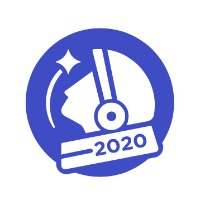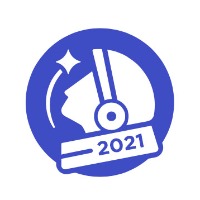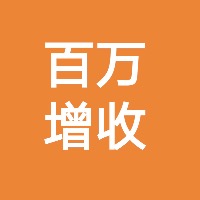
专栏介绍
🤦🏻 关于我:ex京东用户中心负责人,也在ebay、阿里混迹过。 🍵《青陈》是关于「产品文化广义阅读」的专栏,涉及「商业、思维、设计、文化、审美」等话题,抵制一切成功学和「干货」 🐈 每周1-3篇原创文章或分享阅读。会员权益见「详细介绍」。
* 以下为本站建议说明,具体内容以专栏实际提供为准
你将获得
- 系统化的知识体系和学习路径
- 实战案例和项目经验分享
- 作者多年经验总结和方法论
- 持续更新的优质内容
- 专属社群和答疑服务
适合人群
- 对产品感兴趣的学习者
- 希望系统提升专业能力的从业者
- 寻求职业发展突破的人士
相似专栏推荐

产品沉思录 | 第四季(完结)
产品by shaonan × fonter
产品沉思录™ 是一个关于产品的知识库,也是一个 Newsletter (邮件组),始于 2017 年,累计发布近 200+ 期,涵盖几十个人物/产品/公司专题研究,累计近百万字内容。 除了点击下方「介绍」外,你还可以浏览 - 免费精选集:https://pmthinking.com - 本年度目录:https://xiaobot.net/post/27ade9d2-bf1c-41b1-b9ff-3bc1b4966e7a 本年度内容已经连载完毕,如需最近一季内容,请移步:https://xiaobot.com/p/pmthinking2023 人们会被自己热爱的事物改变,而没有人因为给予而贫穷。

产品沉思录 | 第五季(完结)
产品by shaonan × fonter
产品沉思录™ 是一个关于产品的知识库,也是一个 Newsletter (邮件组),始于 2017 年,累计发布近 200+ 期,涵盖几十个人物/产品/公司专题研究,累计近百万字内容。 除了点击下方「介绍」外,你还可以浏览 - 免费精选集:https://pmthinking.com - 本年度目录:https://xiaobot.net/post/27ade9d2-bf1c-41b1-b9ff-3bc1b4966e7a 本年度内容已经连载完毕,如需最近一季内容,请移步:https://xiaobot.com/p/pmthinking2023 人们会被自己热爱的事物改变,而没有人因为给予而贫穷。

向心修炼
产品by Summer喵老师
BAT11年,产品负责人,前腾讯高级讲师,职场高分导师。ToC、AI、ToB均有点涉猎。做过千百万级用户产品,也做过多类型的AI创新产品和ToB业务。 有点标签便于行走江湖,其实是一个:有时阅读、常常哲思、热衷铲屎的阿宅。 本专栏是 向心修炼2023年版 买断制,内容主要有「产品」「职场」「修炼」三个系列的新鲜思考。 个人V:fruitjellycc

产品经理自由职业之路2022
产品by Super黄
2023年主题:破局,构建稳定自增长的内容和商业系统! 作为探索了一年半自由职业的产品经理,接下来会用产品思维迭代商业IP,已经是小红书第一产品经理的我,希望和大家一起更快的成长~ 本专栏在12月15日前,只需购买季度档99元,即可永久获得2023年专栏的阅读权,含专属社群一份(私我拉)。之后涨价为149元。 老用户有效期到明年的自动获得2023年专栏的阅读权。

产品经理自由职业之路2023
产品by Super黄
2023年主题:破局,构建稳定自增长的内容和商业系统! 作为探索了一年半自由职业的产品经理,接下来会用产品思维迭代商业IP,已经是小红书第一产品经理的我,希望和大家一起更快的成长~ 本专栏149元,即可永久获得2023年专栏的阅读权,含专属社群一份(私我拉)。

百万增收咨询心得手记
产品by 飞巴
飞巴自2021年底开始做 1V1咨询,通过咨询累计让用户增收了超过 100W「期待2年内超千万」,曾1小时让咨询者实现30倍增长两周增收 20W+。 为什么你无论如何拼尽全力流量始终毫无起色? 为什么手握流量却赚不到钱? 为什么你的产品种类繁多却无人问津? 为什么你的生意总卡在瓶颈无法突破? 在这个专栏里,你可以看到飞巴飞巴 1V1 咨询案例中,提炼的精华心得和通用策略; 案例中既有 1000W+ 营收的企业老板、中高管辞职创业者、年入百万的超级个体,也有项目遇到瓶颈的人、副业小白等等,都表示从中有所收获。 专栏承诺至少更新100个篇,目前已更新了15篇,小册买断制永久有效,原价199元,内测限时优惠价39元,更新到20篇后内测期结束,将涨价至49元。 订阅后加微:eliwendy,领取订阅福利。免费星球:https://t.zsxq.com/0fKpAXhqB